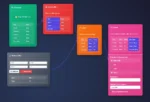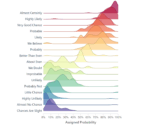In today’s rapidly evolving landscape, traditional, inflexible methods of managing vast sets of data and analytics processes can no longer keep pace. Decision-makers must pivot towards a more flexible and dynamic approach—one that allows organizations to adapt swiftly to changing demands and opportunities. Enter composable data analytics: a modular methodology that breaks down complex analytical processes into distinct, reusable building blocks. Just as LEGO bricks can be creatively assembled to form different structures, composable analytics helps businesses quickly adapt, experiment, and innovate in response to new challenges or opportunities. By incorporating a composable analytics approach, enterprises are not only empowering their teams to generate actionable insights faster but also building a resilient and future-proof data strategy capable of handling the immense scale and complexity of modern business data landscapes. Let’s explore how this building-block philosophy can redefine your company’s analytical workflows, unlock agility, and elevate your decision-making capabilities.
Understanding Composable Data Analytics
Composable data analytics represents an evolutionary leap forward from traditional monolithic data architectures. Traditionally, companies relied on rigid, cumbersome analytical platforms that required extensive technical expertise, significant investment, and limited flexibility to meet changing business requirements. Composable analytics tackles these limitations head-on by emphasizing a modular, flexible architecture. Instead of following a fixed, linear pipeline, analytic processes break down into smaller, interchangeable components—such as data integration, transformation, visualization, and workflow automation—which can be independently developed, optimized, and recombined as needed. Put simply, composable analytics enables data teams to “mix-and-match” services, functionalities, and techniques effectively, accelerating innovation and significantly enhancing flexibility.
At its core, composable analytics facilitates interoperability and ease of integration. From ETL processes and data observability practices to optimized data APIs, each modular component is designed to work seamlessly together, providing significant time and cost reductions when implementing improvements or adapting to new analytical use cases. Moreover, teams can swiftly experiment and prototype analytical solutions without the necessity of costly infrastructural overhauls. Much like customizable software solutions, composable analytics lays down a robust foundation adaptable to ever-changing market conditions and technologies, allowing enterprises to remain competitive throughout their digital transformation journeys.
Advantages of Adopting a Composable Analytics Approach
The modularity in composable data analytics unlocks a plethora of strategic advantages for enterprises willing to embrace this new paradigm. First and foremost, composability fosters unparalleled agility. With flexibility in mind, data teams can swiftly alter analytical workflows in response to market shifts, tech upgrades, or internal requirements without extensive reconfigurations. Team members, including data engineers and analysts—who each have distinct but complementary roles as detailed in our article about data engineers and data analysts—can collaborate effectively by leveraging easily integrated building blocks.
A composable framework also dramatically shortens time-to-value. Modular analytical “bricks,” encompassing components like data collection, cleansing, and visualization, can be assembled rapidly. Such nimbleness boosts an organization’s ability to seize opportunities quickly, ensuring timely and relevant insights are always available. Additionally, businesses can invest selectively in specialized analytical functionalities or integrations that address precise business problems, avoiding expensive, cumbersome, and sometimes unnecessary one-size-fits-all solutions.
Finally, a composable data analytics approach drives scalability and future-proofing. Companies can grow their analytical capabilities gradually, integrating emerging technologies such as advanced AI, machine learning modules, or new data sources without disrupting their existing infrastructure. Thus, composability inherently supports continuous improvement, innovation, and adoption of industry best practices, ensuring longevity and sustained competitive advantage.
Creating Composable Analytics Solutions: The Building Blocks
Data Integration & APIs
A robust foundation for composable analytics begins with efficient and reliable data integration. Organizations must deploy adaptable integration strategies that connect seamlessly with internal software solutions and external platforms. Utilizing powerful APIs, companies can dynamically access and operationalize data across multiple sources, increasing operational efficiency and agility. An excellent example of this functionality is our Procore API consulting service, expanding analytical accessibility across diverse systems and standardized interfaces.
Data Processing & ETL Pipelines
Next, data processing workflows and ETL tasks serve as another vital building block. Modular ETL (Extract-Transform-Load) tasks streamline complex transformations, preparing raw data into analyzable formats rapidly—a cornerstone task we’ve covered comprehensively in our resource on beginner’s ETL processes. Composable ETL pipelines can leverage automation tools and customizable task schedulers, such as our recently launched Canopys Task Scheduler software, to enhance data quality and reliability at scale.
Analytics & Visualization Modules
Once data is integrated and processed, organizations must focus on analytics and visualization. Modular visualization tools and frameworks can seamlessly interconnect, allowing users to achieve customizable, context-driven insights and reports quickly. Modules dedicated to filtering data leveraging operations like the versatile SQL BETWEEN operator help analysts drill down effectively into targeted data sets. Visualization modules enable analysts and stakeholders to interpret data intuitively without becoming bogged down in advanced technical complexity, speeding decision-making processes.
Observability & Monitoring Components
Reliable observability is vital to maintaining robust analytical systems. Composable frameworks enable organizations to deftly integrate data observability strategies, emphasizing transparency, trustworthiness, and proactive error resolution. This provides teams with consistent data quality, rapid troubleshooting and assurance of accuracy across complex workflows, vital aspects for confident decision making in today’s fast-paced environments.
Composable Analytics for Broader Organizational Impact
Beyond its immediate technological benefits, composable analytics significantly broadens organizational impact, triggering expansion into cross-functional collaboration and strategic alignment across various departments. Since analytics is inherently relevant to all teams, composability encourages communication and collaboration between data analysts, SEO strategists, marketing directors and other business leaders alike. As emphasized in our analysis of analytics’ impact on SEO performance, consolidated, accurate analytical insights create balanced, data-driven strategic initiatives across your organization.
Moreover, composability’s innate adaptability prompts businesses to move beyond restrictive departmental boundaries, challenge conventional assumptions, and foster an organizational culture of curiosity and innovation. By empowering all employees with operational analytics modules optimized for their specific roles, composability democratizes data—enabling professionals throughout an enterprise to leverage analytics as a strategic capability, unlocking growth, and continuous improvement at scale.
Moving Forward with Composable Data Analytics
Transitioning to composable analytics doesn’t have to be overwhelming, and the shift can often begin with small, focused initiatives, leveraging incremental experimentation, evaluation, and progress. Embracing the composable framework starts by recognizing individual data components within workflows and identifying opportunities for adopting flexibility, modularity, and integration. Consider engaging expert consultants who offer customized hourly consulting support, enabling accelerated adoption of composable frameworks without burdening internal resources.
Additionally, organizations can utilize composable data analytics to gradually solidify their reliance on robust data platforms rather than legacy tools. For instance, our exploration around migrating away from Excel by installing local databases demonstrates how modular shifts enhance analytical capabilities incrementally. Ultimately, by adopting composable analytics, organizations position themselves advantageously for continuous improvement, scalability, and relevance in today’s vibrant market.
Embrace the potential of composable data analytics today—laying the groundwork for smarter, more agile decisions tomorrow.



















